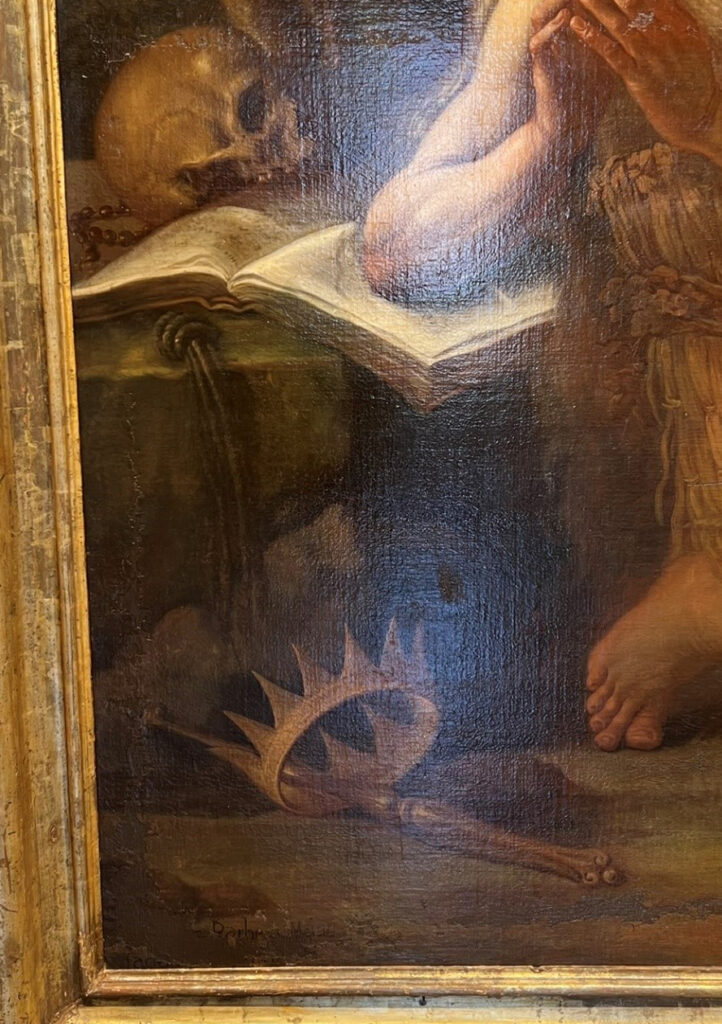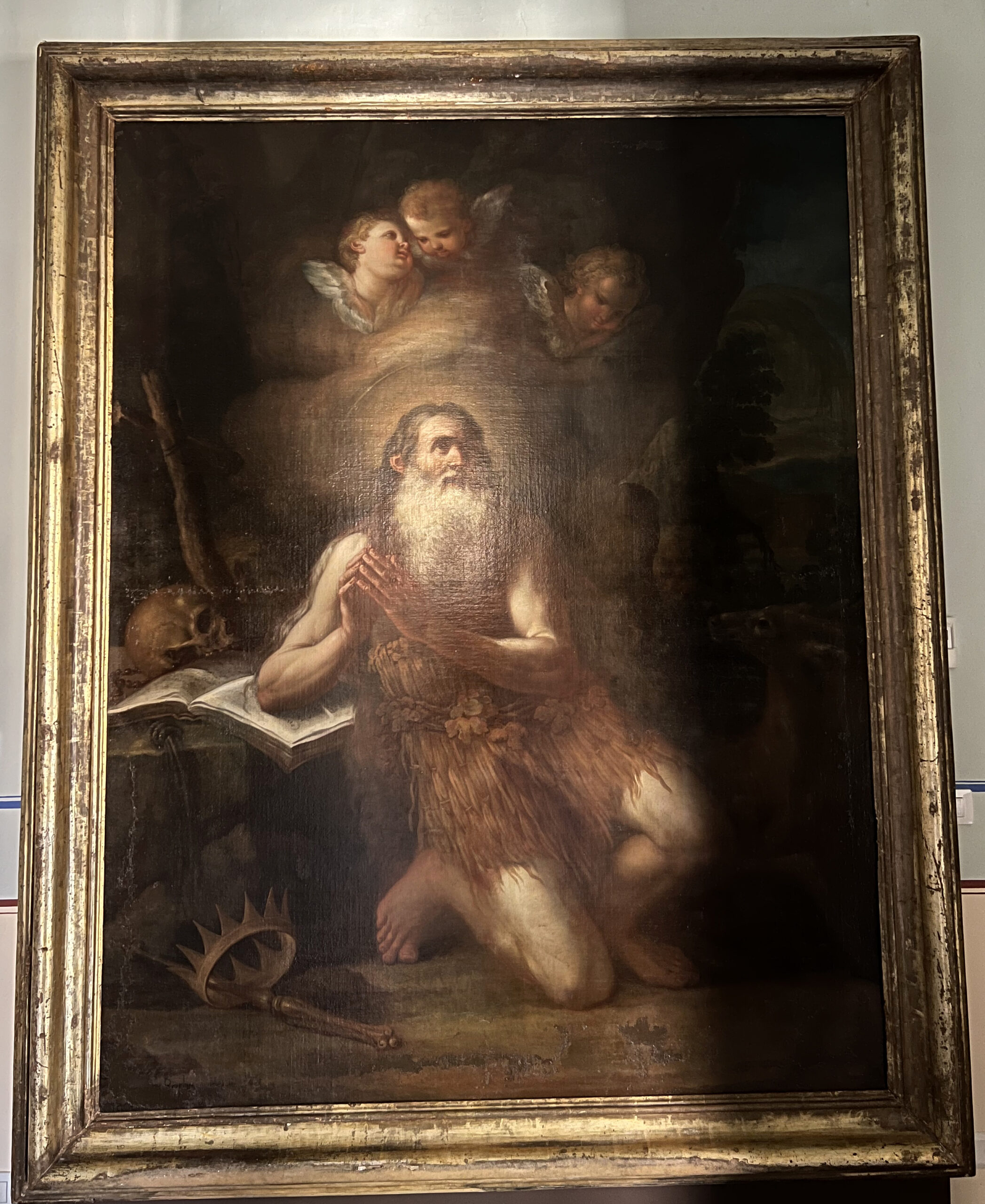The canvas, painted by Giovanni Barbera for the altar dedicated to S. Onofrio in the Church of the Purification or S. Maria dei Bianchi (no longer extant today), was transferred in 1811, by order of Bishop Todaro, to the Church of Addolorata al Castello.
The figure of the hermit saint, dressed in skins and foliage and covered by his own beard and long hair, is portrayed praying beside a rock above which are a skull, a book, a cross, a rosary and scourges. The presence of the royal insignia placed on the lower left and the doe in the background refer to some details of the Life of the saint narrated by the fifth-century Egyptian monk Pafnutius: Onofrio is said to have been, in fact, of noble origins, rejected to embrace the hermit life, and fed by a doe.
Devotion to the saint most likely originates from the presence in the Archipelago, between the 6th and 9th centuries, of hermit monks, attested certainly in Lipari and Salina.
In the hamlet of Pollara, for example, where the saint is represented according to the same iconographic model in the main altarpiece of the church together with St. Bartholomew and the Immaculate Conception, there is a cave with rock paintings vulgarly known as “Sant’Onofrio,” which preserves the memory of some hermit.
To the same author of this painting, who turns out to be quite prolific in the Aeolian territory, can also be ascribed a Holy Family with St. Bartholomew from the Church of the Rosary at the Well on Lipari.


